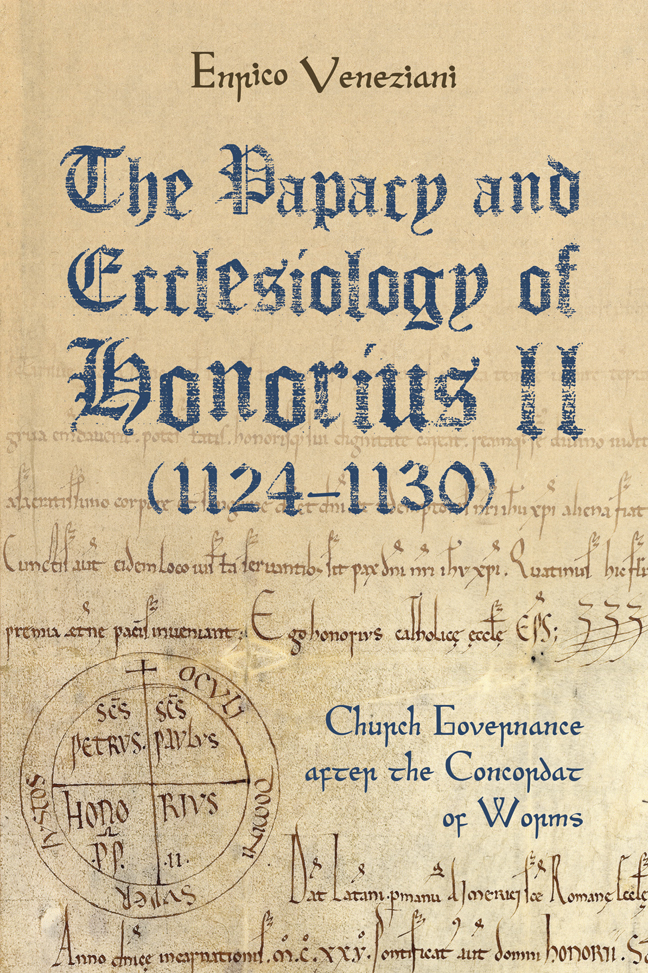 The Papacy and Ecclesiology of Honorius II (1124-1130)
The Papacy and Ecclesiology of Honorius II (1124-1130) Book contents
- Frontmatter
- Dedication
- Contents
- List of Illustrations
- Acknowledgements
- List of Abbreviations
- Introduction
- 1 Honorius II and Roman primacy: continuities and innovations
- 2 The instruments used to assert Roman primacy
- 3 Honorius's deafening silences: his relations with lay powers
- 4 Ecclesiology at work: a case study of Montecassino
- Conclusion
- Appendix: A preliminary calendar of the letters of Honorius II
- Bibliography
- Index
- Studies in the History of Medieval Religion
4 - Ecclesiology at work: a case study of Montecassino
Published online by Cambridge University Press: 09 January 2024
- Frontmatter
- Dedication
- Contents
- List of Illustrations
- Acknowledgements
- List of Abbreviations
- Introduction
- 1 Honorius II and Roman primacy: continuities and innovations
- 2 The instruments used to assert Roman primacy
- 3 Honorius's deafening silences: his relations with lay powers
- 4 Ecclesiology at work: a case study of Montecassino
- Conclusion
- Appendix: A preliminary calendar of the letters of Honorius II
- Bibliography
- Index
- Studies in the History of Medieval Religion
Summary
During the first half of his papacy, Honorius dealt with a crisis in one of the most powerful monastic houses of the time, Montecassino. The monastery saw the deposition of two Cassinese abbots, Oderisius II (1123–1126) and Nicholas of Tusculum (1126–1127), as well as the appointment of Seniorectus (1127–1137) as the new superior. The pope intervened in the affairs of the cloister to impose his own candidate for this role, forcing the monks to accept it. Moreover, in the same period, there was also a change at the head of the abbey of Farfa, as well as the troubled situation in Cluny with Peter the Venerable and the former abbot, Pontius, which came to an end with the latter's trial in Rome.
Nevertheless, there is a common feature to all these works that has hindered a full understanding of the scope of the pope's intervention. These episodes have always been studied as separate events or without paying attention to the links between them. A particular case which should be dealt with separately is Hayden White's work. He already juxtaposed the leadership changes at Cluny and Montecassino (he did not consider Farfa). However, he read these depositions as results of an alleged ‘new spiritual reform’, forestalling most of the key aspects of the historiographical model later refined and developed by Schmale. Building on White's analysis, the purpose of this chapter is to show that all these episodes were linked, and were key points in a wider strategy aiming to affirm the primacy of the bishop of Rome over the libertas of these monastic institutions – and not the result of a different, more spiritual, orientation of the papacy. The analysis will focus especially on Montecassino, both because it is the least-studied and because it best depicts the intervention of Honorius. However, systematic comparisons will be made with events at both Cluny and Farfa.
A multi-faceted perspective is important in reconstructing this papacy's ideas of the Church in practice. Although claims of primacy had already been made in other contexts, as we have seen, this particular case is significant because of the challenge to Rome that the monasteries had previously shown. They had always pursued their own strategies independently from the Roman church, even during the reforms of the eleventh century, and they worked with the papacy only when their interests coincided.
- Type
- Chapter
- Information
- The Papacy and Ecclesiology of Honorius II (1124-1130)Church Governance after the Concordat of Worms, pp. 161 - 185Publisher: Boydell & BrewerPrint publication year: 2023


